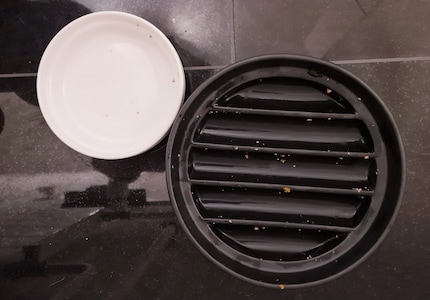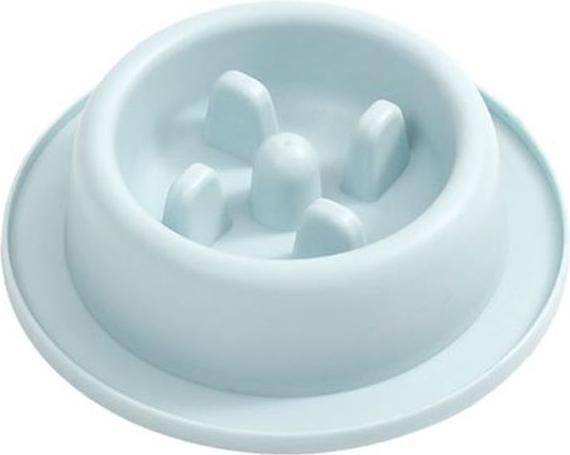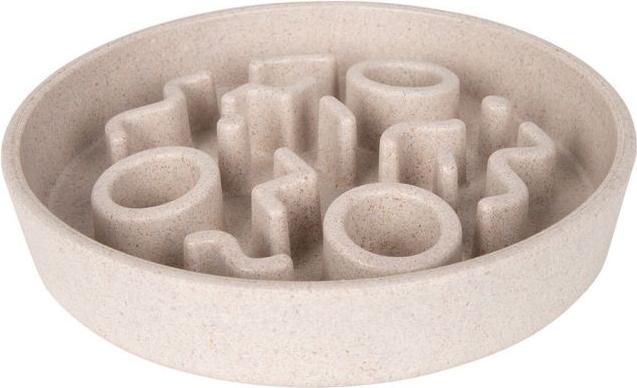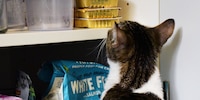

How to stop your cat from eating too fast
Come mealtimes, my cat Jasper goes into turbo mode. I’ve tried all sorts of ways to get him to slow down. But the one that actually helped? A slow feeder.
Some cats leave half their food in their bowl. They’re the fussy ones who only pick out the tastiest morsels. And then there’s Jasper. It doesn’t matter if its over-sugared Sheba, rich Mjamjam, wet food, dry food, venison or shrimp – my cat inhales it all at record speed. He’s a turbo eating machine who can gobble up 60 grammes of wet food in just over a minute. By contrast, my cat Joy takes at least twice as long to eat the same amount.
I should really be grateful for this. After all, it means I don’t have to throw out any food. The bowls are so clean that I don’t even have to wash them. But, here’s the thing. Whenever Jasper’s done eating, he pushes his way into Joy’s bowl, shoving her boisterously aside until she gives up her spot. I initially considered buying an automatic feeder with a microchip flap that only opens for the right cat. However, I soon ditched that idea. Jasper would’ve simply squeezed himself between Joy and the flap. If there’s a gap, he’ll find it.

So, when I temporarily put up a cardboard wall to keep the cats apart, he of course discovered the tiny gap behind it. My attempt to place their bowls in separate rooms proved just as fruitless. Jasper almost broke the door down. When I tried chasing him away, he crept silently back from behind. And distracting him? The second my attention strayed, he was stuffing his face again. There was only one option left. Instead of trying to turn off this turbo eating machine, I had to turn him down.
Slow feeders for the win
Rather than needing a switch to do this, I needed a bowl. A [slow feeder](/search?q=anti-snare bowl&filter=18224%3D194959), to be precise. I ordered three dishwasher-safe ones for my review:
- a ceramic one
- one made of food-safe plastic
- a bamboo one
From above, the bowls look like the labyrinths from Maze Runner. There are little walls protruding from the sides of the bowls, arranged and angled in different ways. The spaces in between them are for the food.
When I compare the feeders, the ceramic one immediately stands out. Tipping the scales at 908 grammes, and with a diameter of 20 centimetres, it’s by far the largest and heaviest one. It’s more reminiscent of a dog bowl for a Great Dane than a cat bowl. Confused, I look at the packaging, only to find that it really is «for cats». Alrighty then. Jasper has the appetite of at least ten Great Danes anyway.

Bowl 1: heavy, large, wide
Ready, steady, bowl! I set down the solid ceramic bowl containing 60 grammes of wet food in front of Jasper. My little speed eater pounces on it immediately. Will he be more like a tractor than a racecar this mealtime? Frantically, he ploughs his way through the food lodged in the ridges of the bowl. I look at the stopwatch on my phone. Within two minutes, he’s hoovered up the last piece of meat. That’s not much longer than he’d take to finish a typical, shallow bowl. So it’s not really an improvement. The distances between the obstacles in the bowl are just too big. I’d expected more from a product in this price range.
Bowl 2: lightweight, high, slippery
Could going down a size be a better option? The following day, I give the plastic bowl a whirl. At a diameter of 12 centimetres (outer rim 17 centimetres), it’s the smallest – and, at 90 grammes, also the lightest – bowl I’m testing. Jasper presses his snout between the high walls and tries to open his mouth. But he can’t quite manage it. I can hear him snorting with frustration.
There are two other things I notice. One, Jasper ends up pushing the bowl all around the floor. So, it’s not what you’d call non-slip. Two, he’s left with several chunks of meat stuck to his nose and around his eyes when he finishes eating. Snacks for later? I’m not entirely convinced. A glance at my stopwatch shows that he’s tackled the meal more slowly, so that’s something. To be exact, it’s taken him about three minutes to finish.
Cup 3: medium weight, stable, effective
Can we do one better? That evening, I give the final bowl – the bamboo model – a shot. It has a diameter of 13 centimetres, and weighs 154 grammes. Very average. Jasper pushes his snout into the labyrinth-like feeder. Since the walls in this one aren’t as high as the ones in the previous bowl, almost none of the food sticks to his face. It also has anti-slip protection, meaning the bowl stays in place. Jasper changes his tactics. Instead of wolfing down the chunks of meat, he starts to lick them from the bowl. This time, he takes four and a half minutes to finish his meal. It’s a new record; he’s never eaten this slowly before!
This slow feeder bowl has finally made Jasper the Turbo Eater go into low-power mode. He now finishes eating at almost the same time as Joy. And looks suitably hapless whenever he realises the bowl next to him is already empty.
In a nutshell
The final boss for speedy eaters
Pro
- Very well made
- Sustainable material
- Decent size
- Handy anti-slip protection
- Obstacles are a good height
- Lightweight
- Dishwasher safe
Contra
- Takes slightly more effort to clean than regular bowls
I love anything with four legs or roots - especially my shelter cats Jasper and Joy and my collection of succulents. My favourite things to do are stalking around with police dogs and cat coiffeurs on reportages or letting sensitive stories flourish in garden brockis and Japanese gardens.





